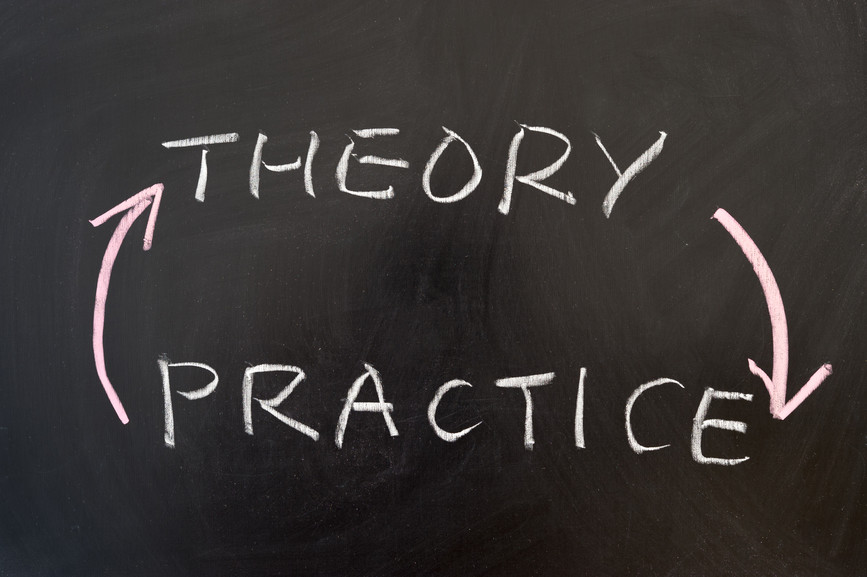St. Augustine, the brilliant Bishop of Hippo and Professor of Rhetoric at Milan, crafted the Christian Neo- Platonist world view of an unseen and untouched world residing above the earthly one scourged by the infidels and idolaters of the day. His catchphrase credo ut intelligam, “I believe in order that I may understand,” encapsulated this worldview throughout the Dark Ages. Ironically, after centuries of aggression and regression, secular universities reignited science and empirical inquiry into the workings of nature. Renaissance Man cleverly turned the phrase on its head to become the rallying cry for progress – intellego ut credam, “I think so that I may believe.”
Enlightenment may be to some degree an article of faith but in substance it is an act of investigation and demonstration. This is particularly true when the emerging future is discontinuous from our familiar past as is always the case with radical innovation or accelerated change. Divergent experiments and experiences that explore new ways and means are prerequisites for the beginner’s mind where the world is made anew.
If imagination is the laboratory of creativity, then investigation is its proving ground. It is only in the mind or other forms of simulation that we can make quick turns without hitting the retaining wall where our wheels fly off. Consider Einstein’s midnight ride on a beam of light across the universe. The psychedelic imagery of that excursion took him to the theory of special relativity and transported us all to modernity. But he had to zigzag past the refutations with mathematical shoptalk and amaze the midway mob with demonstrations of dexterity. He survived the erratic weaving in and out of lanes until his heterodoxy became our orthodoxy. While the dream moves the somnambulist to walk, the body moves him from place to place and provides opportunities to stumble and awaken.
If our situation is well considered, our goals clear and our means amply supplied, we are ready to start taking action on our tasks and initiatives. While big plans often inspire us to begin worthwhile expeditions, they often mislead us with our own assumptions that we know the country well. We can still hear Dr. Johnson admonishing the wayward traveler through the centuries, “The road to hell is paved with good intentions.” So while it is useful to dream big and fix this destination in the heavens as a guiding light, it is provident to be careful and flexible in the paths we take so that we may arrive intact.
Never trust a plan without proof of concept. To test its validity, target specific goals and diversify the actions (Collaborate, Create, Compete and Control) taken to accomplish them. Instead of trying to find the optimum path to success, which will inevitably lead back to the status quo or incrementalism at best, widen the array to accelerate failure and quickly show small wins. Use the exploration phase to rapidly experiment and explore what really works and doesn’t so that solutions are tested and true and momentum is maintained. Exploit the productive dynamics of innovation:
- Grander is Better: Goals should be important enough to inspire and motivate positive and new changes
- Wider is Better: Take at least three highly differentiated approaches to the task or initiative
- Less is Better: Spend as little time and money as possible in this early phase so that there is little vested interest in keeping on with an unsuccessful approach
- Early is Better: Fail early and out of sight to get to the successes sooner
- Smarter is Better: Postmortem every aspect of the approach to quickly learn what works and what doesn’t, and incorporate these key insights into future plans and actions
This approach requires successfully managing paradoxes: Have big dreams but run little pilots to proof the concept; launch radical and diverse initiatives but spend very little on them; intentionally accelerate failure early so that potential solutions are more viable and sustainable.
We start by believing, but we finish by seeing why we believe. Everything in-between requires work. As the old famers say, “You cannot plough a field by turning it over in your mind.”
Excerpt from THE ENLIVENED SELF eBook series.
***NEW*** from the Jeff DeGraff Innovation Library, THE ENLIVENED SELF eBook series.The Enlivened Self entwines leadership principles, innovation methodologies, personal development techniques and creative memoir into an integrating process for re-creating yourself. The Enlivened Self is a guidebook rich with media and web resources, and opportunities to engage for anyone who wants to become the very best version of themselves. Part 3 is available now atwww.jeffdegraff.com.
Photo: DepositPhotos / raywoo / ID 18098331
